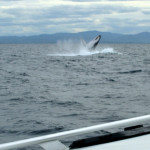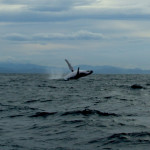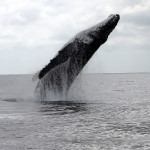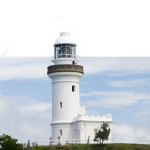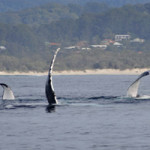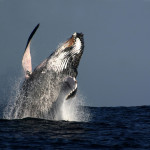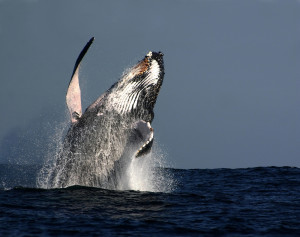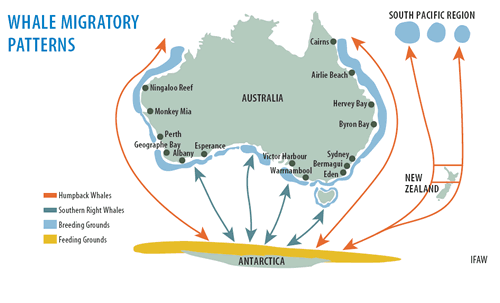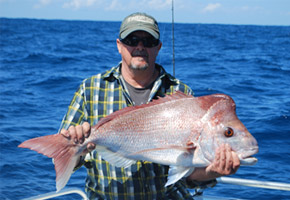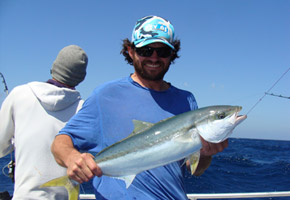Byron Bay Whale Watching
Quick Booking – 0400 946 066
CLICK HERE TO BOOK ONLINE
We are the oldest Byron Bay Whale Watching company operating from Brunswick Heads; with the most modern and comfortable vessel (Windarra). Our experienced crew, coupled with the boats amenities such as an enclosed cabin, comfortable seating and flushing toilet, will ensure that your Byron Bay Whale Watching tour is carried out in comfort and style.
The maximum guests we will take on an individual tour is 9, however please call if you would like to arrange a more intimate private charter for just you and your family/friends.
Allow us to take you on an unbelievable experience, with one of natures giants, the Humpback Whales ,on their migration north and again on their return south , enjoy one of the worlds most magnificent creatures, the Hump back Whale, from the comfort of (Windarra)
You will be able to view the Whales as they pass by Byron Bay up close and personal; capture every moment with our underwater camera.
Enjoy Byron Bay Whale Watching in comfort on board (Windarra), step from the jetty to the boat. Enjoy the inquisitive nature of these majestic creatures, as they pass on their way.
Enjoy the moment with Byron Bay Charter and go Byron Bay Whale Watching
CLICK HERE TO BOOK ONLINE
Humpback whale fact sheet
Humpback whales were nearly hunted to extinction. The last whaling station in NSW, at Byron Bay, closed in 1962 because so few whales could be found. Humpback whales are now protected throughout Australia, and in NSW are listed as a vulnerable species under the Threatened Species Conservation Act 1995.
What do humpback whales look like?
The humpback whale is one of the most easily recognisable of the large whales. Often the first sign of its presence is its ‘blow’, a cloud of vapour that it shoots into the air when it breaks the surface to breathe.
Humpbacks get their name from the humped area of blubber anterior to their dorsal fin that is accentuated by the arching of their backs when diving. They will often roll forward to dive until only the tail sticks out of the water. This is called a fluke-up dive
Other common actions include:
waving their extraordinarily long pectoral fins
a leisurely body roll which ends with a splash as their pectoral fin smacks the surface of the water.
Humpback whales can launch themselves out of the water in a spectacular motion called breaching. There are theories as to why whales breach. They may be communicating to other whales across vast distances, trying to attract other whales (including a mate), warning off vessels or other mates, cooling off, removing parasites such as barnacles, or just playing! Seen from any distance, this action is one of the most dramatic and awe-inspiring in the animal kingdom.
The features of a humpback whale are:
A dark grey or black body, with white patches on the belly, pectoral fins and underside of the tail flukes. These unique black and white markings are like fingerprints, no two are the same. This fingerprint, or fluke identification (ID) aids researchers in identifying individuals as they migrate along the coast.
Long pectoral fins which are almost all white underneath, with bumps on the leading edges. Unlike any other whale, the humpback’s flukes and pectoral fins are scalloped or serrated on the trailing edge.
A slim head, or rostrum, covered with knobs with a distinctive rounded protuberance near the tip of the lower jaw.
Large numbers of barnacles often covering both the rostrum and pectoral fins.
A small dorsal fin located nearly two-thirds of the way down their back.
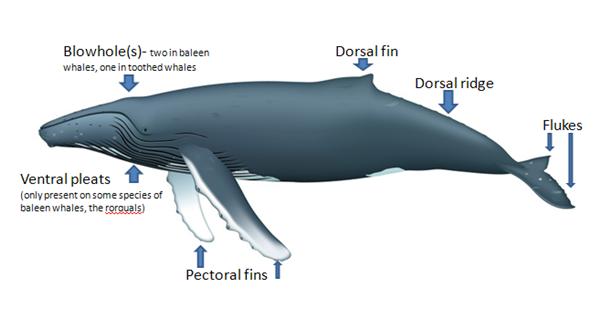
Humpbacks are baleen whales. They don’t have any teeth, and feed by filtering shrimp-like krill between 270-400 baleen plates which hang from the top jaw.
Humpbacks are also rorquals, whales which have distinctive throat grooves. They have up to 35 broad ventral throat grooves, extending at least to their navels. Their bodies are more robust than those of other rorquals.
Female humpback whales can be up to 16 m long. As with all baleen whales, the male is slightly smaller.
What do they sound like?
Humpback whales are one of the most exuberant of all whale species, and are celebrated for their energetic antics and haunting ‘songs’.
During migration, male humpback whales often ‘sing’ complex, lengthy and distinctive songs to communicate their presence to females to entice them to mate. They use syllables and rhyming phrases with a complex sequence of clicks, moans and eerie high-pitched wails that can last for a few moments or an hour. The sounds range from canary-like chirps to deep rumbling sounds that carry for hundreds of kilometres. The ‘songs’ change subtly each year and different humpback populations have different songs.
When can you see them?
During the hotter months of the year, from November to May, humpback whales feed in the waters of the Antarctic. They then migrate north to their subtropical breeding grounds off the Queensland coast. You can see them off the NSW coast:
between May and July, heading north
from September to November, on their way back to the Antarctic.
Byron Bay Whale Watching Charters
| Quick facts – Humpback whale (Megaptera novaeangliae) | |
| Length: | Adults: 14m to 18m; Calves: 4m to 5m at birth |
| Weight: | Adults: up to 50 tonnes; Calves: 2 tonnes at birth |
| Gestation: | 11 to 11.5 months |
| Weaning age: | up to 11 months |
| Calving interval: | 2 to 3 years |
| Physical maturity: | Age: 12 to 15 years; Length: 13 to 14m |
| Sexual maturity: | Age: 4 to 10 yearsLength: 11.6m Males/12.1m Females |
| Mating season: | June to October |
| Calving season: | June to October |
| Cruising speed: | 7km/hr |
| Blow pattern: | Small and bushy, up to 4m |
| Protected: | Since 1965 |
Enjoy the moment and go on a whale watching charter in Byron Bay
Byron Bay Whale Watching offers the premier whale watching experience on the North Coast. Our experienced crew know exactly how to track down and show you the amazing whales and dolphins off of Byron Bay’s beautiful coast. Your whale watching cruise is available at an affordable price on our fantastic boat, the Windarra. When you go with us, you are guaranteed a good time with our legendary whale guarantee. If you don’t see a whale or a dolphin on your trip, you can join us for free on another tour.
Byron Bay Whale Watching – Facts about the Humpack Whale
The humpback whale (Megaptera novaeangliae) is a species of baleen whale. One of the larger rorqual species, adults range in length from 12–16 metres (39–52 ft) and weigh approximately 36,000 kilograms (79,000 lb). The humpback has a distinctive body shape, with unusually long pectoral fins and a knobbly head. An acrobatic animal known for breaching and slapping the water with its tail and pectorals, it is popular with whale watchers off Australia, New Zealand, South America, Canada, and the United States.
Males produce a complex song lasting 10 to 20 minutes, which they repeat for hours at a time. Its purpose is not clear, though it may have a role in mating.
Found in oceans and seas around the world, humpback whales typically migrate up to 25,000 kilometres (16,000 mi) each year. Humpbacks feed only in summer, in polar waters, and migrate to tropical or subtropical waters to breed and give birth in the winter. During the winter, humpbacks fast and live off their fat reserves. Their diet consists mostly of krill and small fish. Humpbacks have a diverse repertoire of feeding methods, including the bubble net feeding technique.
Like other large whales, the humpback was and is a target for the whaling industry. Once hunted to the brink of extinction, its population fell by an estimated 90% before a moratorium was introduced in 1966. While stocks have since partially recovered, entanglement in fishing gear, collisions with ships, and noise pollution continue to impact the 80,000 humpbacks worldwide.
Description
A humpback whale can easily be identified by its stocky body with an obvious hump and black dorsal coloring. The head and lower jaw are covered with knobs called tubercles, which are hair follicles, and are characteristic of the species. The fluked tail, which it lifts above the surface in some dive sequences, has wavy trailing edges.[8] The four global populations, all under study, are: North Pacific, Atlantic, and Southern Ocean humpbacks, which have distinct populations which complete a migratory round-trip each year, and the Indian Ocean population, which does not migrate, prevented by that ocean’s northern coastline.
The long black and white tail fin, which can be up to a third of body length, and the pectoral fins have unique patterns, which make individual whales identifiable.[9][10] Several hypotheses attempt to explain the humpback’s pectoral fins, which are proportionally the longest fins of any cetacean. The two most enduring mention the higher maneuverability afforded by long fins, and the usefulness of the increased surface area for temperature control when migrating between warm and cold climates.
Humpbacks have 270 to 400 darkly coloured baleen plates on each side of their mouths.[11] The plates measure from a mere 18 inches (46 cm) in the front to approximately 3 feet (0.91 m) long in the back, behind the hinge. Ventral grooves run from the lower jaw to the umbilicus about halfway along the underside of the whale. These grooves are less numerous (usually 14–22) than in other rorquals but are fairly wide.[11]
The stubby dorsal fin is visible soon after the blow when the whale surfaces, but disappears by the time the flukes emerge. Humpbacks have a 3 metres (9.8 ft), heart-shaped to bushy blow, or exhalation of water through the blowholes. Because humpback whales breathe voluntarily, the whales possibly shut off only half of their brains when sleeping.[12] Early whalers also noted blows from humpback adults to be 10–20 feet (3.0–6.1 m) high.
Newborn calves are roughly the length of their mother’s head. At birth, calves measure 20 feet (6.1 m) at 2 short tons (1.8 t) The mother, by comparison, is about 50 feet (15 m). They nurse for approximately six months, then mix nursing and independent feeding for possibly six months more. Humpback milk is 50% fat and pink in color.
Females reach sexual maturity at the age of five, achieving full adult size a little later. Males reach sexual maturity at approximately seven years of age. Humpback whale lifespans range from 45–100 years.[13] Fully grown, the males average 13–14 m (43–46 ft). Females are slightly larger at 15–16 m (49–52 ft); the largest recorded specimen was 19 metres (62 ft) long and had pectoral fins measuring 6 metres (20 ft) each.[14] Body mass typically is in the range of 25–30 metric tons (28–33 short tons), with large specimens weighing over 40 metric tons (44 short tons).[15] The female has a hemispherical lobe about 15 centimetres (5.9 in) in diameter in its genital region. This visually distinguishes males and females.[11] The male’s penis usually remains hidden in the genital slit.
Identifying individuals
The varying patterns on the tail flukes are sufficient to identify individuals. A study using data from 1973 to 1998 on whales in the North Atlantic gave researchers detailed information on gestation times, growth rates, and calving periods, as well as allowing more accurate population predictions by simulating the mark-release-recapture technique (Katona and Beard 1982). A photographic catalogue of all known North Atlantic whales was developed over this period and is currently maintained by College of the Atlantic.[16] Similar photographic identification projects have begun in the North Pacific by Structure of Populations, Levels of Abundance and Status of Humpbacks, and around the world.
Soure > http://en.wikipedia.org/wiki/Humpback_whale



